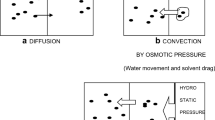Abstract
Patients receiving extracorporeal membrane oxygenation (ECMO) often require continuous renal replacement therapy (CRRT). The intra-circuit pressure of adult ECMO usually deviates from the physiological range. We investigated the use of CRRT connected to an ECMO circuit with physiological intra-circuit pressures (0–150 mmHg, defined as the “safety range”) using an in vitro experiment involving a water-filled ECMO circuit. The intra-circuit pressure pre-pump, post-pump, and post-oxygenator were measured while varying the height of the pump or ECMO flow. The bypass conduit pressure and distance from the post-oxygenator port were measured to find the “safety point”, where the bypass pressure remained within the safety range. Both drainage and return limbs of the CRRT machine were connected to the safety point and the inlet and outlet pressures of the hemofilter were recorded while varying the ECMO and CRRT flow. The pre-pump pressure only remained within the safety range for heights >75 cm (ECMO flow = 4 L/min) or ECMO flow <3.5 L min (height = 50 cm). The post-pump and post-oxygenator pressure was generally outside of the safety range. The bypass pressure decreased according to the distance from the post-oxygenator port and the safety point was found at 60 or 75 cm (in a 90-cm length conduit) regardless of ECMO flow. The hemofilter inlet and outlet pressures remained within the safety range for all conditions of ECMO and CRRT flow, findings validated in clinical cases. The bypass conduit within an ECMO circuit can be connected to a CRRT machine safely under physiological pressures in adult patients receiving ECMO.




Similar content being viewed by others
References
Lin CY, Chen YC, Tsai FC, et al. RIFLE classification is predictive of short-term prognosis in critically ill patients with acute renal failure supported by extracorporeal membrane oxygenation. Nephrol Dial Transplant. 2006;21:2867–73.
Yan X, Jia S, Meng X, et al. Acute kidney injury in adult postcardiotomy patients with extracorporeal membrane oxygenation: evaluation of the RIFLE classification and the Acute Kidney Injury Network criteria. Eur J Cardriothorac Surg. 2010;37:334–8.
Smith AH, Hardison DC, Worden CR, Fleming GM, Taylor MB. Acute renal failure during extracorporeal support in the pediatric cardiac patient. ASAIO J. 2009;55:412–6.
Schmidt M, Bailey M, Kelly J, et al. Impact of fluid balance on outcome of adult patients treated with extracorporeal membrane oxygenation. Intensive Care Med. 2014;40:1256–66.
Kielstein JT, Heiden AM, Beutel G, et al. Renal function and survival in 200 patients undergoing ECMO therapy. Nephrol Dial Transpl. 2013;28:86–90.
Aubron C, Cheng AC, Pilcher D, et al. Factors associated with outcomes of patients on extracorporeal membrane oxygenation support: a 5-year cohort study. Crit Care. 2013;17:R73.
Santiago MJ, Sánchez A, López-Herce J, et al. The use of continuous renal replacement therapy in series with extracorporeal membrane oxygenation. Kidney Int. 2009;76:1289–92.
Santhanakrishnan A, Nestle T, Moore BL, Yoganathan AP, Paden M. Design and validation of a diaphragm pump for pediatric CRRT during ECMO. Int J Artif Organs. 2013;36:892–9.
MacLaren G, Combes A, Bartlett RH. Contemporary extracorporeal membrane oxygenation for adult respiratory failure: life support in the new era. Intensive Care Med. 2012;38:210–20.
Rubin S, Poncet A, Wynckel A, Baehrel B. How to perform a haemodialysis using the arterial and venous lines of an extracorporeal life support. Eur J Cardiothorac Surg. 2010;37:967–8.
Seczyńska B, Królilkowski W, Nowak I, Jankowski M, Szułdrzyński K, Szczeklik W. Continuous renal replacement therapy during extracorporeal membrane oxygenation in patients treated in medical intensive care unit: technical considerations. Ther Apher Dial. 2014;18:523–34.
Chen H, Yu RG, Yin NN, Zhou JX. Combination of extracorporeal membrane oxygenation and continuous renal replacement therapy in critically ill patients: a systematic review. Crit Care. 2014;18:675.
Sucosky P, Dasi LP, Paden ML, Fortenberry JD, Yoganathan AP. Assessment of current continuous hemofiltration systems and development of a novel accurate fluid management system for use in extracorporeal membrane oxygenation. J Med Device-Trans ASME. 2008;2:035002.
Askenazi DJ, Selewski DT, Paden ML, et al. Renal replacement therapy in critically ill patients receiving extracorporeal membrane oxygenation. Clin J Am Soc Nephrol. 2012;7:1328–36.
Tatsumi Y, Watanabe M, Kokubo Y, Nishimura K, Higashiyama A, Okamura T, Okayama A, Miyamoto Y. Effect of age on the association between waist-to-height ratio and incidence of cardiovascular disease: the Suita study. J Epidemiol. 2013;23:351–9.
Robert H, Bartlett MD, Joseph B, Zwischenberger MD: Management of blood flow and gas exchange during ECLS. In: Annich GM, Lynch WR, MacLaren G, Wilson JM, Bartlett RH (eds). ECMO extracorporeal cardiopulmonary support in critical care 4th edn. Ann Arbor: ELSO; 2012. pp. 149–56.
Acknowledgements
We thank Mr. Hiroyuki Ishii, Mr. Yutaka Furukawa, Mr. Michihiko Kobayashi, and Mr. Minami Nagano who are the clinical engineers of Chiba University Hospital for their help in performing the in vitro experiments.
Author information
Authors and Affiliations
Corresponding authors
Ethics declarations
Conflict of interest
The authors declare that they have no conflict of interest.
Rights and permissions
About this article
Cite this article
Suga, N., Matsumura, Y., Abe, R. et al. A safe procedure for connecting a continuous renal replacement therapy device into an extracorporeal membrane oxygenation circuit. J Artif Organs 20, 125–131 (2017). https://doi.org/10.1007/s10047-017-0952-y
Received:
Accepted:
Published:
Issue Date:
DOI: https://doi.org/10.1007/s10047-017-0952-y




